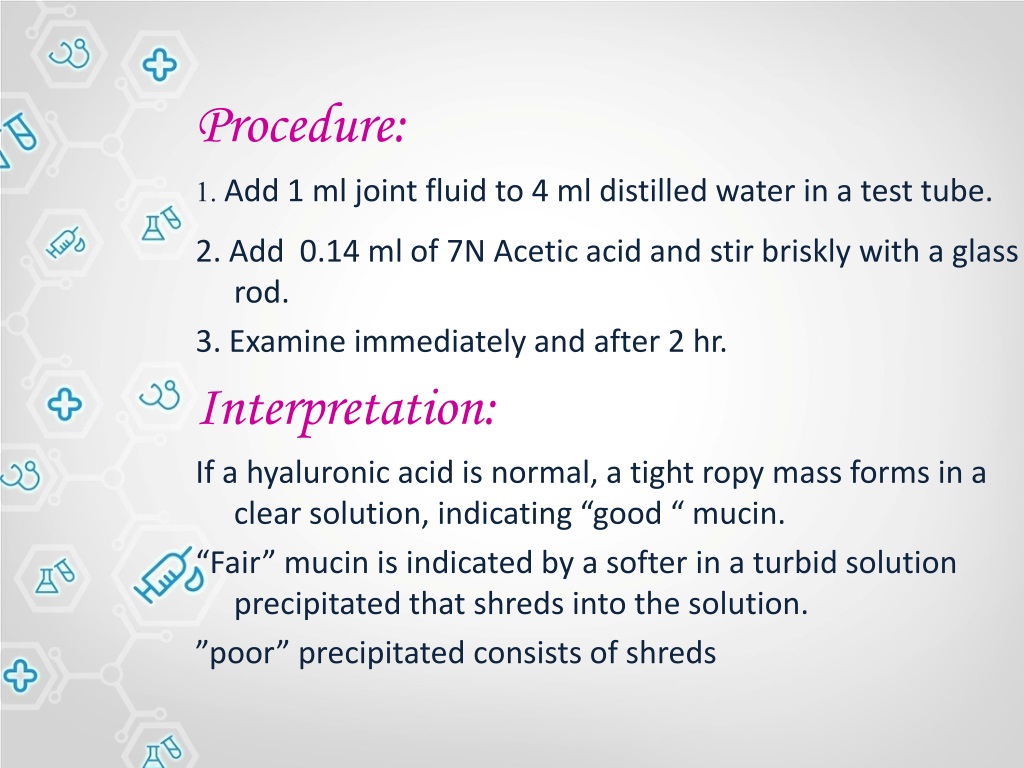
Noninflammatory – Synovial fluid with a nucleated (white) cell count of approximately <2000 white blood cells (WBCs)/mm 3 is noninflammatory. (See 'Categories of joint effusions' below.)ĬATEGORIES OF JOINT EFFUSIONS - Results of synovial fluid analysis can be used to categorize the fluid as noninflammatory, inflammatory, septic, or hemorrhagic based upon the clinical and laboratory analysis ( table 2). Synovial fluid analysis is also helpful in narrowing the differential diagnosis by distinguishing between categories of joint effusions (ie, inflammatory versus noninflammatory) ( table 1), and to diagnose hemarthrosis ( algorithm 1). (See "Clinical manifestations and diagnosis of gout" and "Clinical manifestations and diagnosis of calcium pyrophosphate crystal deposition (CPPD) disease".) In combination with a negative Gram stain and bacterial cultures, a diagnosis of gout or pseudogout may be established by confirming the presence of crystals of monosodium urate (MSU) or calcium pyrophosphate dihydrate (CPPD) in a patient presenting with unexplained inflammatory arthritis. Synovial fluid analysis is also particularly important for definitively diagnosing gout or pseudogout. The most important reason to perform a synovial fluid analysis may be to evaluate for septic arthritis in a patient presenting with an acutely swollen joint that is painful and warm even in patients with a known arthritic disease. INDICATIONS - Arthrocentesis with synovial fluid analysis should be attempted in all patients who have a joint effusion or signs suggestive of inflammation within the joint, without a known cause. (See "Septic arthritis in adults" and "Prosthetic joint infection: Epidemiology, microbiology, clinical manifestations, and diagnosis" and "Prosthetic joint infection: Treatment" and "Disseminated gonococcal infection" and "Bone and joint tuberculosis".) 
Septic arthritis, prosthetic joint infections, gonococcal arthritis, and fungal and mycobacterial arthritis are discussed in detail separately. An overview of synovial fluid analysis in the native joint is discussed here.

The white cell count, differential count, cultures, Gram stain, and crystal search using polarized light microscopy are the most useful studies. INTRODUCTION - Synovial fluid analysis is helpful for determining the underlying cause of arthritis, particularly for septic or crystal-induced arthritis.






 0 kommentar(er)
0 kommentar(er)
